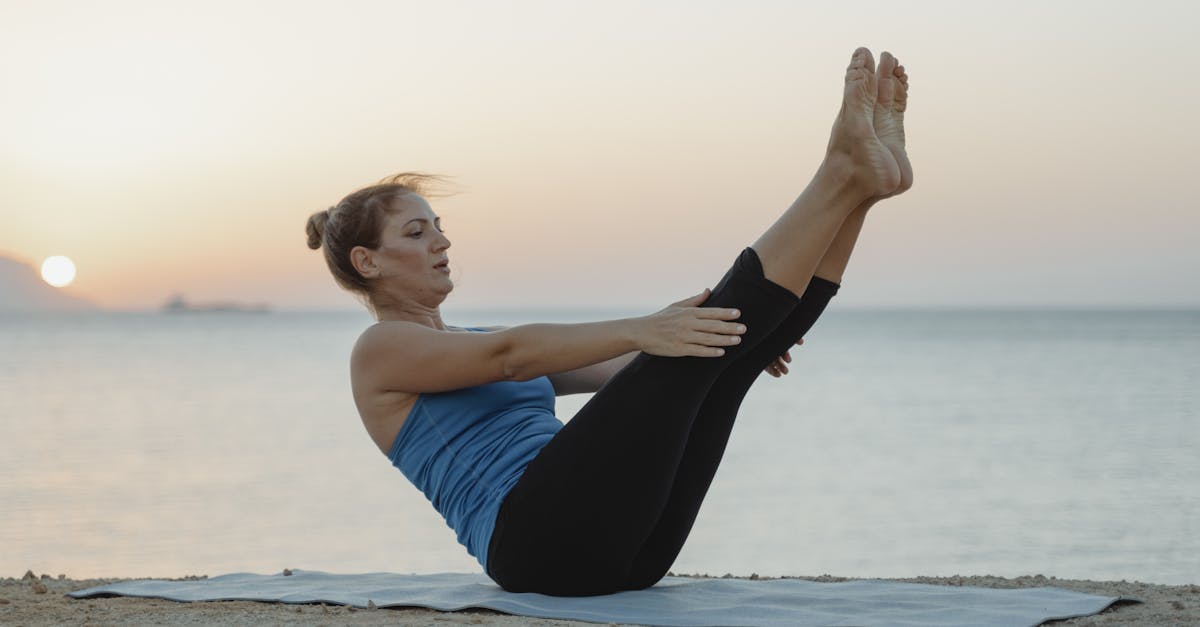Hip Flexor Strengthening Exercises for Runners: Build Endurance and Stability
Empowering Runners: Unlock Strength and Stability with Hip Flexor Exercises

Get Stronger Hips for Unstoppable Runs: Unlock Your Hip Flexors
As runners, we rely on a strong foundation of hip flexors to propel us towards our goals. These muscles not only power our forward motion but also protect our knees and hips from injuries. Whether you’re a seasoned marathoner or just starting your fitness journey, incorporating hip flexor strengthening exercises into your routine is a game-changer. In this comprehensive guide, we’ll dive into the crucial role of hip flexors and reveal the top exercises to build endurance and boost stability for an unstoppable running performance.
1. Understanding the Role of Hip Flexors in Running
Understanding the Role of Hip Flexors in Running: A Foundation for Strength and Injury Prevention
Hip flexors play a pivotal role in the biomechanics of running. These muscles, located at the front of the hip, are responsible for lifting the knee towards the chest during each stride. Strong hip flexors are essential for efficient running, as they generate the power necessary for forward propulsion. They also contribute to hip stability, helping to control excessive side-to-side or rotational movements of the pelvis during running.
Furthermore, robust hip flexors are crucial for injury prevention. They work in conjunction with the hamstrings and quadriceps to maintain proper knee alignment and reduce stress on the joints. This helps prevent common running injuries such as runner’s knee, IT band syndrome, and hip flexor strains. By strengthening the hip flexors, runners can improve their overall running form, reduce their risk of injuries, and unlock their full potential.
2. Top 5 Hip Flexor Strengthening Exercises for Runners

Top 5 Hip Flexor Strengthening Exercises for Runners: Build Strength and Endurance
For runners, strengthening the hip flexors is essential for optimal performance and injury prevention. Here are five effective exercises that target and strengthen these crucial muscles:
- Standing Knee Drive: Stand with your feet hip-width apart. Lift your right knee towards your chest, keeping your core engaged and your back straight. Slowly lower your leg and repeat with the left leg. Perform 2-3 sets of 10-12 repetitions.
- Hip Flexor Stretch with Resistance Band: Attach a resistance band to a low anchor point. Kneel on the ground facing the anchor, with the band attached to your right foot. Keeping your right knee bent, step back with your left leg and lean forward until you feel a stretch in your right hip flexor. Hold for 20-30 seconds and repeat on the left side. Perform 2-3 sets of 10-12 repetitions.
- Kneeling Hip Flexor Stretch: Kneel on the ground with your right knee in front of your left. Keeping your hips square, lean forward and reach your arms overhead. You should feel a stretch in your right hip flexor. Hold for 20-30 seconds and repeat on the left side. Perform 2-3 sets of 10-12 repetitions.
- Copenhagen Plank: Start in a plank position with your forearms on the ground and your body in a straight line from head to heels. Lift your right leg off the ground and bend your knee, bringing your heel towards your glutes. Slowly lower your leg and repeat with the left leg. Perform 2-3 sets of 10-12 repetitions on each side.
- Weighted Hip Thrust: Lie on your back with your knees bent and your feet flat on the ground. Place a weight on your hips and lift your hips towards the ceiling, squeezing your glutes at the top. Slowly lower your hips and repeat. Perform 2-3 sets of 10-12 repetitions.
3. Exercise Modifications and Progressions
Exercise Modifications and Progressions: Tailoring to Fitness Level and Goals
When incorporating hip flexor strengthening exercises into your routine, it’s important to tailor them to your fitness level and gradually increase intensity to avoid injury. Here are some modifications and progressions to consider:
Beginner-Friendly Modifications:
- Standing Knee Drive with Support: Perform the exercise while holding onto a chair or wall for added stability.
- Hip Flexor Stretch with Resistance Band (Modified): Use a lighter resistance band or shorten the band by tying a knot in it to reduce resistance.
- Kneeling Hip Flexor Stretch (Modified): Place a pillow or folded towel under your front knee for extra cushioning.
- Copenhagen Plank (Modified): Hold the position for a shorter duration, such as 10-15 seconds, and gradually increase the hold time as you get stronger.
- Weighted Hip Thrust (Modified): Start with a lighter weight or perform the exercise without any weight initially.
Advanced Progressions:
- Standing Knee Drive with Overhead Press: Add an overhead press by holding dumbbells or kettlebells in each hand and pressing them overhead as you lift your knee.
- Hip Flexor Stretch with Resistance Band (Advanced): Use a heavier resistance band or increase the resistance by lengthening the band.
- Kneeling Hip Flexor Stretch (Advanced): Hold the stretch for a longer duration, such as 30-60 seconds, and add a slight bouncing motion to deepen the stretch.
- Copenhagen Plank (Advanced): Increase the hold time to 20-30 seconds or longer, and add variations such as lifting the opposite leg or performing the exercise on an unstable surface.
- Weighted Hip Thrust (Advanced): Gradually increase the weight or perform the exercise with a barbell for added resistance.
Beginner-Friendly Modifications
Beginner-Friendly Modifications: A Gentle Start to Hip Flexor Strengthening
If you’re new to hip flexor strengthening, it’s important to start with modifications that are tailored to your fitness level. These modifications can help you build a strong foundation and gradually progress to more challenging exercises:
- Standing Knee Drive with Support: Hold onto a chair or wall for added stability as you lift your knee towards your chest. This modification reduces the demand on your hip flexors and helps you maintain proper form.
- Hip Flexor Stretch with Resistance Band (Modified): Use a lighter resistance band or shorten the band by tying a knot in it. This reduces the resistance and makes the stretch more manageable for beginners. Additionally, you can perform the stretch while kneeling on a soft surface, such as a mat or pillow, for extra comfort.
- Kneeling Hip Flexor Stretch (Modified): Place a pillow or folded towel under your front knee to provide additional cushioning and reduce pressure on your knee joint. Hold the stretch for a shorter duration, such as 10-15 seconds, and gradually increase the hold time as you become more comfortable.
- Copenhagen Plank (Modified): Start by holding the position for a shorter duration, such as 10-15 seconds. If needed, you can modify the exercise by performing it on your knees instead of your toes. As you get stronger, gradually increase the hold time and progress to the full plank position.
- Weighted Hip Thrust (Modified): Begin with a lighter weight or perform the exercise without any weight initially. Focus on maintaining proper form and gradually add weight as you progress.
Advanced Progressions
Advanced Progressions: Pushing the Boundaries of Hip Flexor Strength
Once you’ve mastered the basics and built a solid foundation, you can progress to more challenging variations of hip flexor strengthening exercises to further enhance your strength and endurance:
- Standing Knee Drive with Overhead Press: Add an overhead press by holding dumbbells or kettlebells in each hand and pressing them overhead as you lift your knee. This variation incorporates upper body strength and challenges your core stability.
- Hip Flexor Stretch with Resistance Band (Advanced): Use a heavier resistance band or increase the resistance by lengthening the band. You can also perform the stretch while standing, which requires more balance and stability.
- Kneeling Hip Flexor Stretch (Advanced): Hold the stretch for a longer duration, such as 30-60 seconds, and add a slight bouncing motion to deepen the stretch. Additionally, you can try performing the stretch with your back foot elevated on a platform or step.
- Copenhagen Plank (Advanced): Increase the hold time to 20-30 seconds or longer, and add variations such as lifting the opposite leg or performing the exercise on an unstable surface, such as a BOSU ball or wobble board.
- Weighted Hip Thrust (Advanced): Gradually increase the weight or perform the exercise with a barbell for added resistance. You can also try variations such as single-leg hip thrusts or hip thrusts with a pause at the top position.
4. Incorporating Hip Flexor Exercises into a Training Plan

Incorporating Hip Flexor Exercises into a Training Plan: A Balanced Approach
Integrating hip flexor exercises into your running routine is essential for building strength and preventing injuries. However, it’s important to do so wisely to avoid overtraining and potential setbacks:
- Start Gradually: Begin by incorporating one or two hip flexor exercises into your routine each week. Gradually increase the frequency and intensity of the exercises as you get stronger.
- Listen to Your Body: Pay attention to how your body responds to the exercises. If you experience any pain or discomfort, stop the exercise and consult with a medical professional.
- Balance with Other Exercises: Hip flexor exercises should be part of a well-rounded training plan that includes exercises for other muscle groups, such as the hamstrings, quadriceps, and glutes. This helps prevent muscle imbalances and reduces the risk of injuries.
- Prioritize Recovery: Allow for adequate rest and recovery between workouts to give your muscles time to repair and rebuild. Overtraining can lead to burnout, injuries, and decreased performance.
- Cross-Train: Engage in activities such as swimming, cycling, or yoga to give your hip flexors a break while still maintaining your fitness level.
5. Additional Tips and Considerations
Additional Tips and Considerations: Optimizing Your Hip Flexor Routine
In addition to incorporating hip flexor exercises into your training plan, there are several other factors to consider for a well-rounded approach to hip flexor health:
- Stretching Techniques: Regular stretching of the hip flexors helps improve flexibility and range of motion, reducing the risk of injuries. Incorporate dynamic stretches before workouts and static stretches after workouts or as part of your daily routine.
- Warm-Up Exercises: Before engaging in hip flexor strengthening exercises, perform a dynamic warm-up that includes exercises such as leg swings, hip circles, and lunges. This helps prepare your hip flexors for the more intense movements to come.
- Recovery Strategies: Allow for adequate rest and recovery between workouts to give your hip flexors time to repair and rebuild. Incorporate foam rolling or massage into your recovery routine to promote blood flow and reduce muscle soreness.
- Injury Prevention Measures: Listen to your body and take steps to prevent injuries. Use proper form when performing exercises, avoid overtraining, and gradually increase the intensity and frequency of your workouts to minimize the risk of strains or tears.
Hip Flexor Strengthening Quiz
Test your understanding of the key insights from this article:
Question 1: What is the primary role of hip flexors in running?
(a) Stabilizing the knee joint (b) Generating power for forward propulsion (c) Absorbing impact forces (d) Controlling lateral movements of the pelvis
Question 2: Which of the following exercises is NOT recommended as a beginner-friendly modification for hip flexor strengthening?
(a) Standing Knee Drive with Support (b) Copenhagen Plank (Modified) (c) Hip Flexor Stretch with Resistance Band (Modified) (d) Weighted Hip Thrust
Question 3: True or False: Gradually increasing the intensity and frequency of hip flexor exercises is crucial to avoid overtraining.
(a) True (b) False
Question 4: Which of the following is a recommended recovery strategy for hip flexors?
(a) Foam rolling (b) Massage (c) Icing (d) Both (a) and (b)
Question 5: True or False: Stretching hip flexors should only be done after workouts.
(a) True (b) False
Answer Key:
- (b)
- (d)
- (a)
- (d)
- (b)
